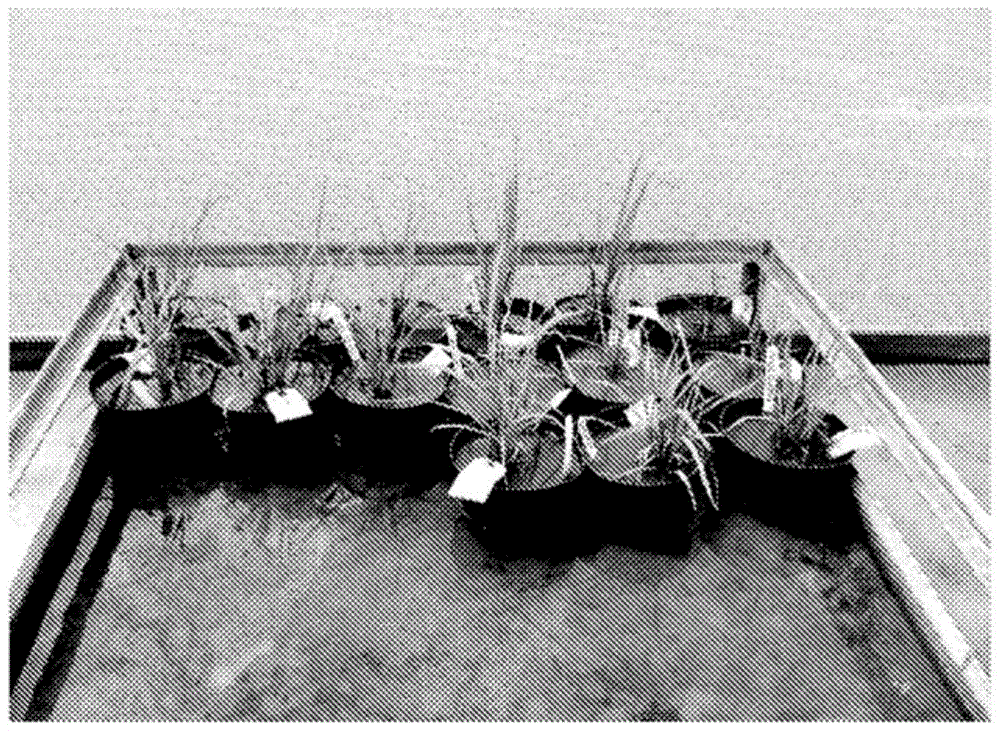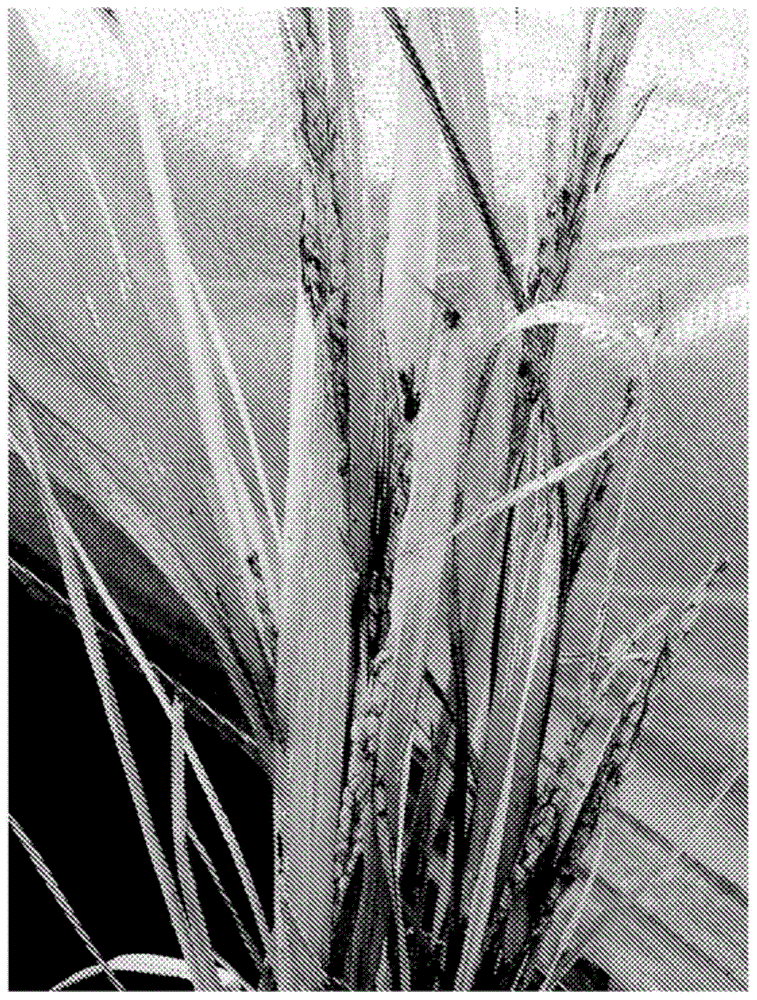Methods and compositions to produce rice resistant to ACCase inhibitors
A rice, resistance technology, applied in the field of producing ACC enzyme inhibitor-resistant rice and compositions, which can solve the problems of expensive, time-consuming, etc.
- Summary
- Abstract
- Description
- Claims
- Application Information
AI Technical Summary
Problems solved by technology
Method used
Image
Examples
Embodiment 1
[0061] Example 1: Results of ML0831265-01493 Response to Quizalofop Herbicide Rates
[0062] The response of rice lines with the G2096S mutation to quizalofop herbicide was tested by testing a series of herbicide dosages. level of resistance. Treatment with different herbicide doses such as Figure 6 shown. All treatments were applied at the 2-3 leaf stage. Plots were evaluated 21 days after application. The spray was applied at a rate of 10 gal / acre containing 1% vegetable oil. Each treatment was assessed as percent injury compared to unsprayed control plots.
[0063] The source of the G2096S mutation is the ML0831265-01493 strain. A seed sample from ML0831265-01493 was deposited with ATCC. This line is resistant to some ACCase herbicides due to a mutation in the ACCase gene that results in an amino acid change at position 2096 of serine instead of glycine, and is similar to R0146 except for this resistance.
[0064] Four different selections were made on ML0831265-0...
Embodiment 2
[0065] Example 2: Results of Response of Rice Lines with G2096S Mutation to ACC Inhibitor Herbicide Doses
[0066] The response of a rice line (ML0831265-01493) with the G2096S mutation to different ACCase-inhibiting herbicides was examined. Choose a group of herbicides ( Figure 7 ) and applied it to three rice lines with the G2096S mutation and the non-mutated original variety R0146. The response of R0146 and mutant lines as Figure 7 shown. Herbicides were applied at twice the labeled level, except for quizalofop and clethodim, which were applied at twice the amount suitable to kill rice.
[0067] All treatments were applied at the 2-3 leaf stage, approximately 20 days after seed planting. Plots were evaluated 21 days after application. The spray was applied at a rate of 10 gal / acre containing 1% vegetable oil. Each treatment was assessed as percent injury compared to unsprayed control plots.
[0068] A seed sample from ML0831265-01493 was deposited with ATCC. This ...
Embodiment 3
[0071] Example 3: The mutant rice line ML0831265-01493 has no obvious difference in characteristics from the non-mutant R0146 rice, the difference is only that the former is ACCase inhibitor-resistant rice
[0072] In the study plot, the mutant rice line ML0831265-01493 was observed side by side with the original non-mutant line R0146. No observable differences were identified. Plants show the same growth pattern. Plant health and robustness also appeared similar without any detectable difference. Some of the measured characteristics also revealed new significant differences between the mutant line ML0831265-01493 and the non-mutated line R0146 (Table 2). The G2096S mutation in line ML0831265-01493 showed no negative effects on normal plant growth or fitness.
PUM
 Login to View More
Login to View More Abstract
Description
Claims
Application Information
 Login to View More
Login to View More - R&D
- Intellectual Property
- Life Sciences
- Materials
- Tech Scout
- Unparalleled Data Quality
- Higher Quality Content
- 60% Fewer Hallucinations
Browse by: Latest US Patents, China's latest patents, Technical Efficacy Thesaurus, Application Domain, Technology Topic, Popular Technical Reports.
© 2025 PatSnap. All rights reserved.Legal|Privacy policy|Modern Slavery Act Transparency Statement|Sitemap|About US| Contact US: help@patsnap.com



